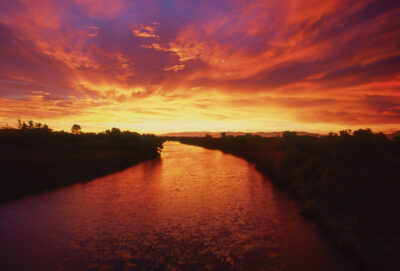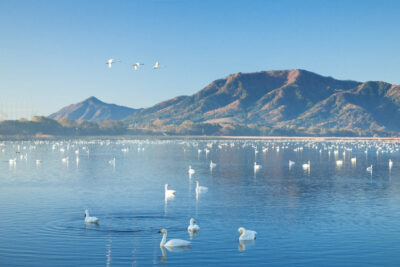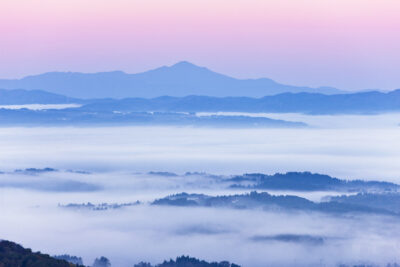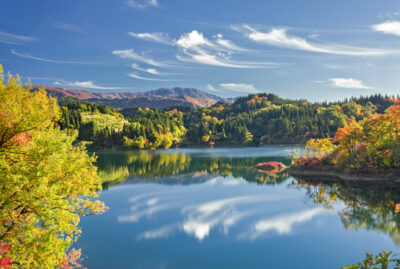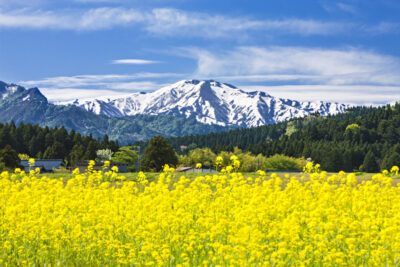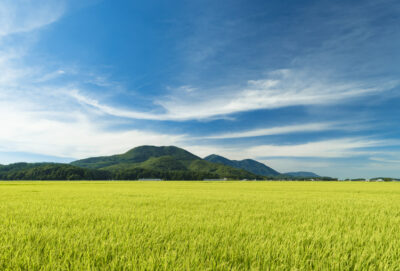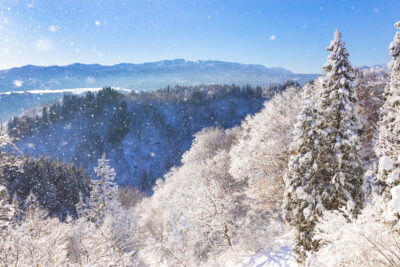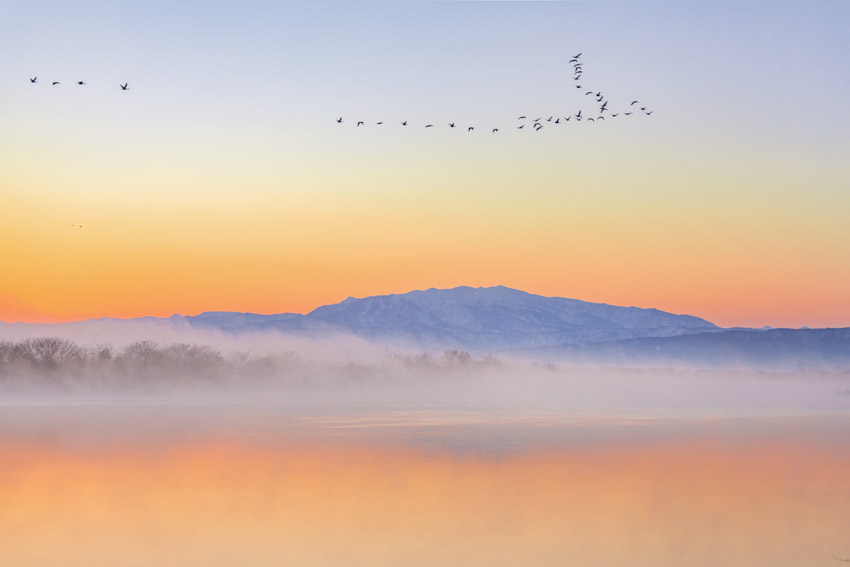
新潟県には、水辺のねぐらや餌場となる田園が数多く広がっています。そのため、秋から春先にかけて多くの渡り鳥が新潟にやってきて越冬します。
早朝、放射冷却で凍てついた河川敷を歩き、信濃川のほとりで朝日を迎えると、オオヒシクイの鳴き声が空に響きます。ふと見上げると、雪をいただく守門岳を背景に、餌を求めて田んぼへと向かう群れが悠然と飛び去っていきます。この年は小雪のためか、一月なのに凍み渡りができました。
信濃川中流域の与板橋付近は、河川敷が広く、下流には大きな中洲があります。鳥たちはその中洲をねぐらにしているのでしょう。
新潟県は、日本で越冬するオオヒシクイの約半数が集まる一大「別荘地」ともいえます。カムチャツカ半島からやってくるオオヒシクイのうち、約半数が福島潟に集まるそうです。白鳥に比べて首が短いオオヒシクイでも餌をついばむことができる小雪の年には、長岡付近まで南下してくるのかもしれません。
Niigata Prefecture is home to numerous farmlands that serve as roosting and feeding grounds for birds. As a result, many migratory birds come to Niigata to spend the winter from autumn to early spring.
In the early morning, as you walk along the riverbank frozen by radiative cooling and greet the sunrise on the banks of the Shinano River, the cries of the great cormorant echo through the sky. Looking up, you can see a flock of birds flying gracefully toward the rice fields in search of food, with the snow-capped Mount Sumon in the background. This year, due to the light snowfall, it was possible to observe the birds migrating even in January.
The area around Yoita Bridge in the middle reaches of the Shinano River has a wide riverbank and a large sandbar downstream. The birds likely use this sandbar as their roosting site.
Niigata Prefecture can be called a major “wintering ground” for about half of the Greater White-fronted Geese that overwinter in Japan. It is said that about half of the Greater White-fronted Geese that come from the Kamchatka Peninsula gather at Fukushima Lake. Even the Greater White-fronted Goose, which has a shorter neck than the swan, may migrate as far south as the Nagaoka area in years with light snowfall, when it can forage for food.
EOS5DMarkⅣ 84mm 1/125秒 f:7.1
©️photo by Nakamura Osamu

